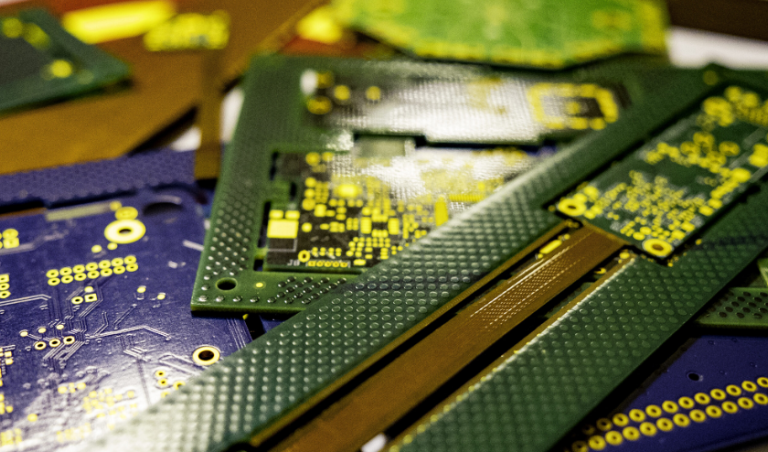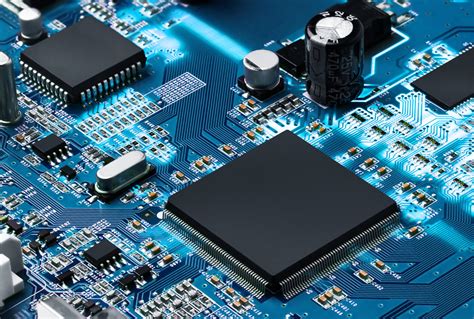Mastering 4PCB Assembly: A Guide to Precision and Efficiency
Key Takeaways
Mastering 4PCB assembly requires a solid grasp of essential principles and techniques. First, it’s crucial to understand that pcba involves not just the assembly of components, but also the intricate arrangement of traces and layers that support the circuit functionality. Using high-quality tools and materials significantly enhances the efficiency and outcome of your projects. Techniques such as accurate soldering, effective placement of components, and utilizing advanced tools can lead to remarkable precision in assembly, ensuring your final product is both reliable and performing at its best.
Additionally, maintaining an efficient workflow is vital. Organizing your workspace, minimizing unnecessary movements, and using an assembly line approach can greatly improve productivity. Challenges like component misalignment or thermal issues during soldering can be mitigated by following established best practices and conducting regular quality checks.
Lastly, staying informed about emerging trends in 4PCB technology will not only help you stay competitive but also inspire innovation in your projects. By focusing on these key areas, anyone can enhance their skills in 4PCB assembly, leading to successful outcomes in various applications.
Understanding the Basics of 4PCB Assembly
At the core of modern electronics, 4PCB assembly is a process that involves the fabrication of printed circuit boards (PCBs) with four layers, enhancing their functionality and reducing overall size. The fundamental concept behind pcb assembly lies in the integration of electrical components onto a substrate that facilitates both mechanical support and electrical connectivity. In this intricate process, a variety of techniques are employed to ensure that each layer is perfectly aligned and securely bonded, making it crucial for designers to grasp the foundational aspects of pcba.
One key principle is understanding how multiple conductive layers can efficiently manage signals while minimizing interference. This involves a careful selection of materials such as copper for tracks, epoxy resin for insulation, and substrates like FR-4 which provide reliability under various conditions. Furthermore, precision in placement and soldering becomes imperative; even slight deviations can lead to malfunctions. Hence, mastering these fundamental elements sets the stage for superior quality and performance in your projects. By delving into the nuances of 4PCB assembly, one not only learns about construction techniques but also develops an appreciation for how these boards serve as the backbone of advanced electronic systems today.
Essential Tools and Materials for 4PCB Assembly
When embarking on a journey into 4PCB assembly, having the right tools and materials is crucial for achieving high standards in performance and quality. The following list outlines essential components that every assembler should consider:
| Tool/Material | Purpose |
|---|---|
| Soldering Iron | Used for joining electronic components by melting solder. |
| Solder Paste | A mixture of solder and flux used in applying solder to the PCB. |
| PCB Holder/Fixture | Secures the PCB during assembly, allowing for precision handling. |
| Tweezers | Useful for placing small components onto the board accurately. |
| Multimeter | Essential for testing connections and ensuring correct functionality of the assembled board. |
| Cleaning Solutions | Used to remove excess flux from the surfaces of the PCB post-assembly. |
“Investing in high-quality tools can significantly enhance your efficiency during PCBA processes.”
When selecting tools, focus on durability and precision, as these factors will elevate your overarching assembly process. Incorporating a reliable set of hand tools, along with automated equipment where applicable, can streamline your workflow and reduce manual errors. Furthermore, familiarize yourself with each tool’s specific applications to maximize their potential in your projects.
Ultimately, understanding which tools are necessary not only aids in achieving optimal results but also underpins the entire pcb assembly endeavor. Make sure to regularly assess and maintain your equipment to ensure long-term reliability and performance throughout your assembly tasks. Choosing wisely will set a solid foundation for mastering the art of assembling complex PCBs efficiently.
Techniques for Achieving Precision in 4PCB Assembly
Achieving precision in 4PCB assembly is fundamental to ensuring the reliability and performance of electronic devices. One of the key techniques involves the meticulous placement of components on the board. Utilizing automated pick-and-place machines can significantly enhance accuracy by minimizing human error during this critical step. It’s also vital to consider the role of solder paste application; employing a stencil can ensure an even distribution, which is essential for achieving a strong electrical connection.
Regularly calibrating your equipment is another technique that shouldn’t be overlooked. By keeping machines finely tuned, the tolerances remain tight, resulting in high-quality pcba outcomes. Additionally, employing thermal profiling during solder reflow processes helps to maintain consistent temperatures throughout, further enhancing joint integrity.
For thoroughness, systematic inspection methods—such as automated optical inspection (AOI)—help identify defects early on in the assembly process. This not only streamlines workflow but also increases overall production yield. Lastly, integrating design for manufacturability (DFM) principles into your design can preemptively address challenges that may arise during 4PCB assembly, ultimately leading to a refined product that stands out in quality and performance.
Best Practices for Efficient Workflow in 4PCB Assembly
Implementing efficient workflows in 4PCB assembly is crucial for maximizing productivity and ensuring high-quality results. One fundamental practice is to map out a clear assembly process before starting production. This involves developing step-by-step instructions that address each stage of the pcba process, from component placement to soldering. Organizing the workspace is equally important; tools and materials should be easily accessible to minimize downtime. Employing lean manufacturing principles can also enhance efficiency by reducing waste and optimizing resource utilization.
In addition, adopting automated assembly techniques—like pick-and-place machines—can significantly increase speed and precision, leading to a more streamlined workflow in pcb assembly. Continuous training for team members is essential as well; keeping personnel updated on the latest techniques and technologies fosters a culture of constant improvement. Regularly reviewing performance metrics can help identify bottlenecks or recurring issues in the assembly line, allowing for timely adjustments that enhance overall efficiency.
Lastly, fostering collaboration among team members encourages an environment where ideas for improvement can be freely shared. By prioritizing these best practices, teams can ensure that their 4PCB assembly processes not only meet industry standards but also set new benchmarks for precision and operational excellence.
Common Challenges in 4PCB Assembly and How to Overcome Them
In the realm of 4PCB assembly, several challenges can impede the progress of your projects, but understanding and addressing these hurdles can significantly enhance both quality and efficiency. One common issue pertains to component placement, where misalignment can lead to poor connections, affecting the overall performance of the printed circuit board assembly (PCBA). To counteract this, employing advanced pick-and-place machines with accurate calibration can help ensure that components are positioned correctly. Another challenge is dealing with soldering flaws such as cold joints or bridging, which can compromise electrical conductivity. Utilizing high-quality soldering techniques and regularly inspecting joints with optical inspection systems can mitigate this issue effectively. Additionally, managing thermal issues during soldering processes is crucial; overheating components may lead to malfunctions. Implementing controlled heating profiles in the reflow process will help achieve optimal temperature settings and minimize risks. By being proactive in addressing these common challenges, professionals involved in 4PCB assembly can ensure their projects not only meet but exceed industry standards for quality and performance.
Quality Assurance Measures in 4PCB Assembly
Ensuring high standards in 4PCB assembly is vital for the reliability and performance of electronic devices. The implementation of rigorous quality assurance measures throughout the pcba process can significantly enhance product outcomes. One effective strategy is to conduct comprehensive inspections at various stages of assembly. This includes both visual inspections and automated optical inspections (AOI), focusing on identifying defects such as misalignment, solder issues, or component placement errors.
Additionally, utilizing statistical process control (SPC) techniques helps in monitoring the quality standards over time, allowing for immediate corrective actions if deviations are noticed. Implementing regular training sessions for assembly line workers ensures that they are well-versed in best practices and emerging technologies related to pcb assembly. Furthermore, maintaining detailed documentation of each stage of production can not only facilitate traceability but also aid in identifying trends that can be leveraged to improve efficiency.
Incorporating feedback loops from product testing phases plays a crucial role in refining assembly processes as well. By analyzing failures or malfunctions post-production, teams can iterate on their practices to mitigate similar issues in future projects. Emphasizing a culture of quality within teams ensures that every member understands the importance of their role in achieving superior results in 4PCB assembly, thus directly impacting the overall success and reliability of electronic products.
Future Trends in 4PCB Assembly Technology
The landscape of 4PCB assembly is continually evolving, driven by advancements in technology and the increasing demands for higher performance and greater efficiency. As manufacturers seek to streamline their PCBA processes, several key trends are emerging. One of the most significant developments is the integration of automation and robotics in the assembly line. Automated soldering techniques, combined with sophisticated vision systems, enable precision placement of components, reducing the likelihood of human error and increasing overall accuracy.
Additionally, advancements in materials technology have led to the development of new substrates that support higher frequencies and lower signal loss. This shift allows for more complex designs while maintaining performance integrity—essential for modern electronics applications that demand robustness.
Another trend gaining momentum is the adoption of smart manufacturing practices. By utilizing data analytics and IoT concepts, companies can enhance their pcb assembly operations through real-time monitoring and predictive maintenance strategies. This proactive approach not only reduces downtime but also fosters an environment where continuous improvement is possible.
Furthermore, sustainability is becoming a focal point within 4PCB assembly processes. There is a growing emphasis on environmentally friendly materials and energy-efficient manufacturing practices that align with global standards for sustainability. By focusing on reducing waste and improving energy consumption, manufacturers can achieve a competitive edge while being responsible stewards of the environment.
In conclusion, staying abreast of these trends in PCBA technology will empower professionals to make informed decisions that enhance precision and efficiency while driving innovation forward in an ever-demanding market landscape.
Case Studies: Success Stories in 4PCB Assembly
In the dynamic field of pcb assembly, numerous organizations have leveraged innovative approaches to enhance their production processes, resulting in remarkable achievements. One notable case involved a tech startup that faced challenges in scaling their pcba operations. By adopting automated soldering techniques, they reduced production time by 30%, significantly improving their efficiency while maintaining high standards of precision. Another success story highlights a manufacturer that implemented rigorous quality assurance measures during their 4PCB assembly processes. This not only minimized errors but also boosted customer confidence in their products, leading to a 25% increase in repeat orders. Furthermore, a research institution explored advanced materials in their pcb assembly projects, which provided increased durability and performance for their prototypes. Such examples illustrate the transformative power of strategic thinking and execution in 4PCB assembly, enabling businesses to stand out through enhanced quality and performance.
Conclusion
In summary, mastering 4PCB assembly is crucial for achieving enhanced performance in electronics manufacturing. This process not only demands a thorough understanding of the pcba but also necessitates the right combination of tools and techniques tailored to your project requirements. Efficiency in workflow can streamline operations, significantly reducing time and costs associated with production. Furthermore, employing proper quality assurance measures ensures that each unit produced maintains a high standard of reliability. By addressing common challenges methodically, individuals can innovate and solve problems swiftly. As technology continues to evolve, staying abreast of future trends in pcb assembly is essential for remaining competitive in the industry. Embracing these insights will undoubtedly place you on the path to proficiency and excellence in your 4PCB assembly endeavors.
FAQs
What is 4PCB assembly?
4PCB assembly, or PCB assembly, refers to the process of soldering electronic components onto a printed circuit board (PCB) that has four layers. This method is essential for creating multi-layer circuits that can handle complex electrical designs.
What are the key benefits of 4PCB assembly?
The primary benefits of 4PCB assembly include enhanced circuit density, improved performance, and reduced size. This allows for more functionalities packed into a smaller design, making it ideal for modern electronic devices.
What tools are essential for efficient PCBA?
To achieve efficient PCBA, essential tools include a soldering iron, reflow oven, solder paste printer, and quality inspection equipment. These tools help ensure high-quality assemblies and accurate results.
How can precision be achieved in 4PCB assembly?
Precision in 4PCB assembly can be achieved by using automated machines, accurate component placement techniques, and thorough quality checks. Implementing stringent quality assurance measures can minimize errors and improve overall performance.
What common challenges arise in PCBA, and how can they be overcome?
Common challenges in PCBA include misalignment of components, solder defects, and thermal issues. These challenges can be overcome by employing advanced techniques such as X-ray inspection for alignment checks and proper thermal management strategies.







